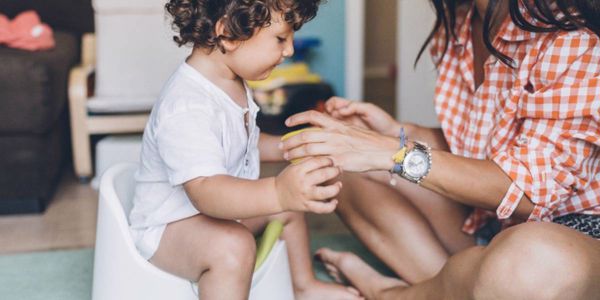When children are confronted with big life changes, they may struggle with emotional responses that are out of proportion to the event (in our adult opinion!). The best way to help children through these periods is to provide support and guidance so that they can develop the skills they need in order to cope more easily with change.
Small children are still learning how to manage their emotions, which can sometimes be difficult.
It is important for parents to help their children learn how to manage their emotions and express themselves in a positive way, without suggesting they suppress their emotions or shame them for doing so.
Tips for Managing Big Emotions in Your Children When a Change is Happening
1. Identify emotions your child may be experiencing
Every child will experience various emotions at different ages. Throughout your child’s early years, he or she will experience many emotions without understanding why. As they grow, they will eventually learn to associate certain feelings with specific situations or events. Helping your child to identify their emotions with a ‘see it, say it’ approach is the most helpful way of starting the process of understanding and identifying emotions from an early age.
Eg: You’re feeling…..because…..
Here are some of the emotions your child may experience:
- sad
- angry
- afraid
- worried
- overwhelmed
- overstimulated
- excited
- tired
- happy
- hopeful
- disappointed
You can also help your child to recognise emotions by making emotion dolls or setting up an emotions area at home.
Your Baby Club and Center Parcs are giving you a chance to win a family break in a Woodland Lodge at a UK Center Parcs village of your choice.
2. Analyze what the change may look like for your child
The change in real terms may seem minimal, however, the change for your child can be significant. Children thrive on routine and continuity. Their feelings of safety are based on their knowledge of their world being a certain way and so anything that disrupts this, no matter how small, can have a huge impact.
Did Mum go back to work recently? Is a new sibling on the way? Have you moved house or changed schools? Have the supermarket stopped stocking their favourite cereal? The smallest change can feel like a huge upheaval and can result in emotional outbursts.
3. Understand what you can do to help your child during this time of change
The first step to understanding how you can help your child is to make sure you aren’t judging their responses by how YOU would react. Children are not developmentally ready to rationalise in the same way that adults can and their whole world revolves around the very small part they play within it – they can’t comprehend that there are ‘bigger problems’ in the world elsewhere because THEY are THE world. To think of it in these terms can really help us to understand just how large their worries can feel by how much of their world has changed because of it.
It is really important to allow children the space and permission to feel and express their emotions without shame or opinion. Never try to guilt trip your child into feeling bad for making you feel sad about their behaviour...eg, “it makes me sad when you cry” – their emotions aren’t about you, don’t add to their worries by loading your own emotions on their shoulders. Don’t use phrases such as, “ big children don’t cry”, or, “stop crying like a baby”. Tears are scientifically proven to help the body release the feel good hormones needed to combat stress and cortisol produced when sad, upset or angry…in short, tears are healing. Allow them to flow.
4. Take some time and talk about how to support each other during this time of change together
Do model feelings and emotions to your child. Show them that you are also affected by change and demonstrate how you deal with those emotions appropriately. For example, “I’m feeling nervous about going back to work, sometimes when I feel nervous I can feel my heart beating faster or I might breathe quickly…I’m going to help my body to calm down by breathing in slowly through my nose and out through my mouth. Hugs always make me feel better – I’m going to hug my pillow, or perhaps I could hug you?”
Always remember to identify emotions, either your own or theirs – this helps children to recognise and understand how they and others are feeling and why they may act differently because of it.







